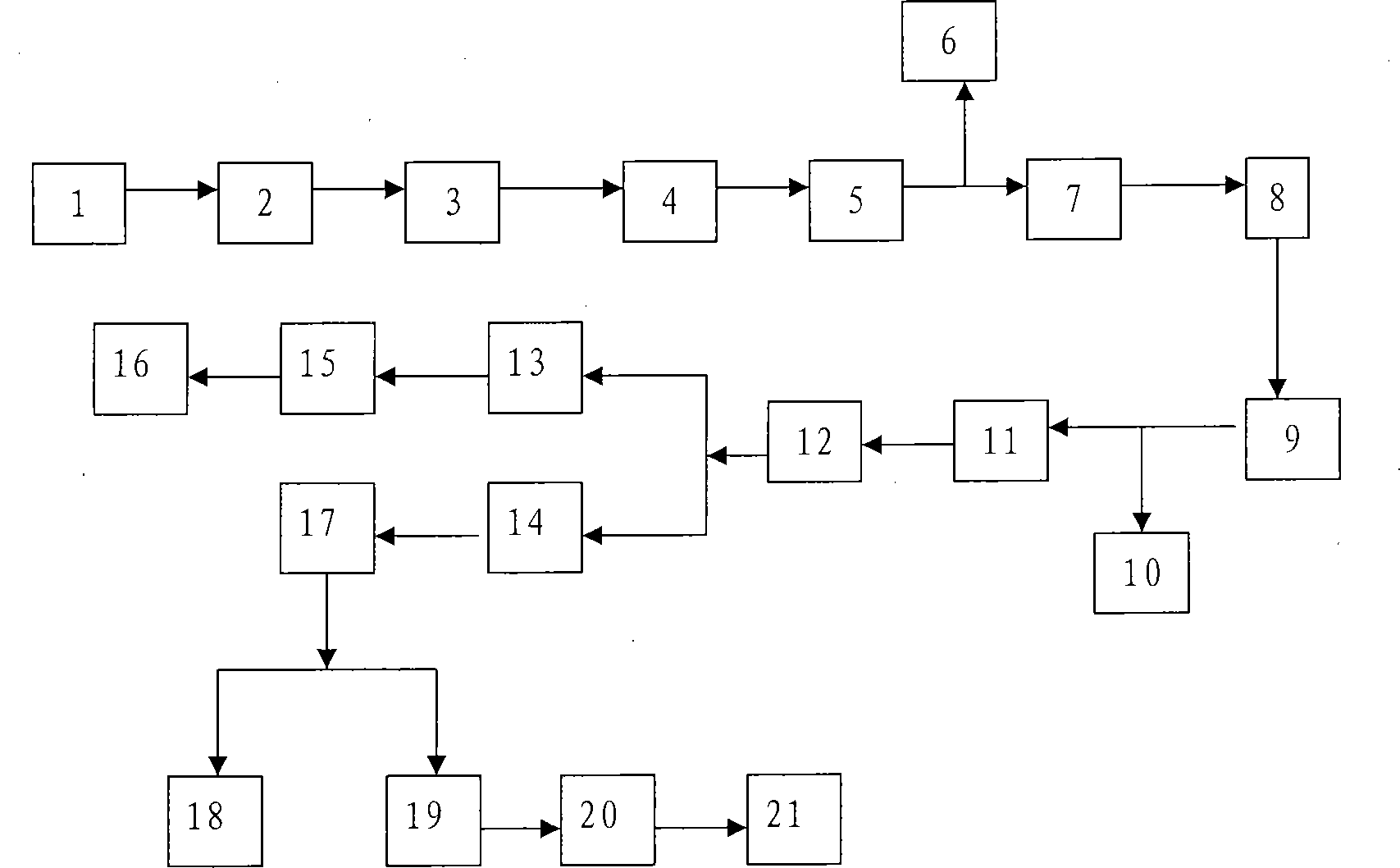Aqueous enzymatic method for extracting rapeseed oil and recovering protein
A rapeseed oil and protein technology, which is applied in the production, fermentation, and fat production of fat oil/fat, can solve the problems of low oil-containing protein, difficult demulsification and separation, low oil yield, etc., and achieves less environmental pollution and simple process equipment. , The effect of improving oil yield
- Summary
- Abstract
- Description
- Claims
- Application Information
AI Technical Summary
Problems solved by technology
Method used
Image
Examples
Embodiment 1
[0027] 1) Raw material processing: the raw rapeseed is crushed into rapeseed cake according to the conventional method, and the citric acid solution with pH 4.5-5.5 is soaked at high temperature (80-120℃) for 0.1-2h, and then the solid-liquid ratio is 1:2-1 :20 Replenish citric acid solution, refining, plate and frame filtration to separate and remove the crust. The material liquid is cooled to 30-60°C.
[0028] 2) Enzymatic hydrolysis: add 50-500U / g composite cellulase according to the dry weight of rapeseed, enzymatically hydrolyze at 30-60℃ for 2-6h, then add 100-500U / g acid protease, enzymatically hydrolyze at 30-60℃ 2- 6h. After the enzymolysis is completed, the temperature is raised to 80-120°C and kept for 5-10min to inactivate the enzyme.
[0029] 3) Residue separation: the enzymatic hydrolysis solution is separated by a horizontal centrifuge to obtain liquid phase 1 and the residue.
[0030] 4) Demulsification: Add concentrated sulfuric acid to liquid phase 1 to adjust th...
Embodiment 2
[0034] 1) Raw material processing: The raw rapeseed is crushed into rapeseed cake according to the conventional method, and the acetic acid solution with pH 4.5-5.5 is soaked at high temperature (80-120℃) for 0.1-2h, and then the solid-liquid ratio is 1:2-1: 20 Supplement acetic acid, refining, plate and frame filtration to separate and remove the skin. The material liquid is cooled to 30-60°C.
[0035] 2) Enzymatic hydrolysis: add 50-500U / g composite cellulase according to the dry weight of rapeseed, enzymatically hydrolyze at 30-60℃ for 2-6h, then add 100-500U / g neutral protease and xylanase composite enzyme , Enzymatic hydrolysis at 30-60℃ for 2-6h. After the enzymolysis is completed, the temperature is raised to 80-120°C and kept for 5-10min to inactivate the enzyme.
[0036] 3) Residue separation: the enzymatic hydrolysis solution is separated by a horizontal centrifuge to obtain liquid phase 1 and the residue.
[0037] 4) Demulsification: Add sodium chloride solid to liquid ...
Embodiment 3
[0041] 1) Raw material processing: The raw rapeseed is crushed into rapeseed cake according to the conventional method, and soaked in 0.01M phosphoric acid solution at high temperature (80-120℃) for 0.1-2h, and then supplemented with phosphoric acid according to the solid-liquid ratio 1:2-1:20 Solution, refining, plate and frame filtration to separate and remove the skin shell. The material liquid is cooled to 30-60°C.
[0042] 2) Enzymatic hydrolysis: add 50-500U / g composite cellulase according to the dry weight of rapeseed, enzymatically hydrolyze at 30-60℃ for 2-6h, then add 100-500U / g trypsin and pectinase composite enzyme, 30 Enzymatic hydrolysis at -60℃ for 2-6h. After the enzymolysis is completed, the temperature is raised to 80-120°C and kept for 5-10min to inactivate the enzyme.
[0043] 3) Residue separation: the enzymatic hydrolysis solution is separated by a horizontal centrifuge to obtain liquid phase 1 and the residue.
[0044] 4) Demulsification: Add polyacrylamide ...
PUM
 Login to View More
Login to View More Abstract
Description
Claims
Application Information
 Login to View More
Login to View More - R&D
- Intellectual Property
- Life Sciences
- Materials
- Tech Scout
- Unparalleled Data Quality
- Higher Quality Content
- 60% Fewer Hallucinations
Browse by: Latest US Patents, China's latest patents, Technical Efficacy Thesaurus, Application Domain, Technology Topic, Popular Technical Reports.
© 2025 PatSnap. All rights reserved.Legal|Privacy policy|Modern Slavery Act Transparency Statement|Sitemap|About US| Contact US: help@patsnap.com

